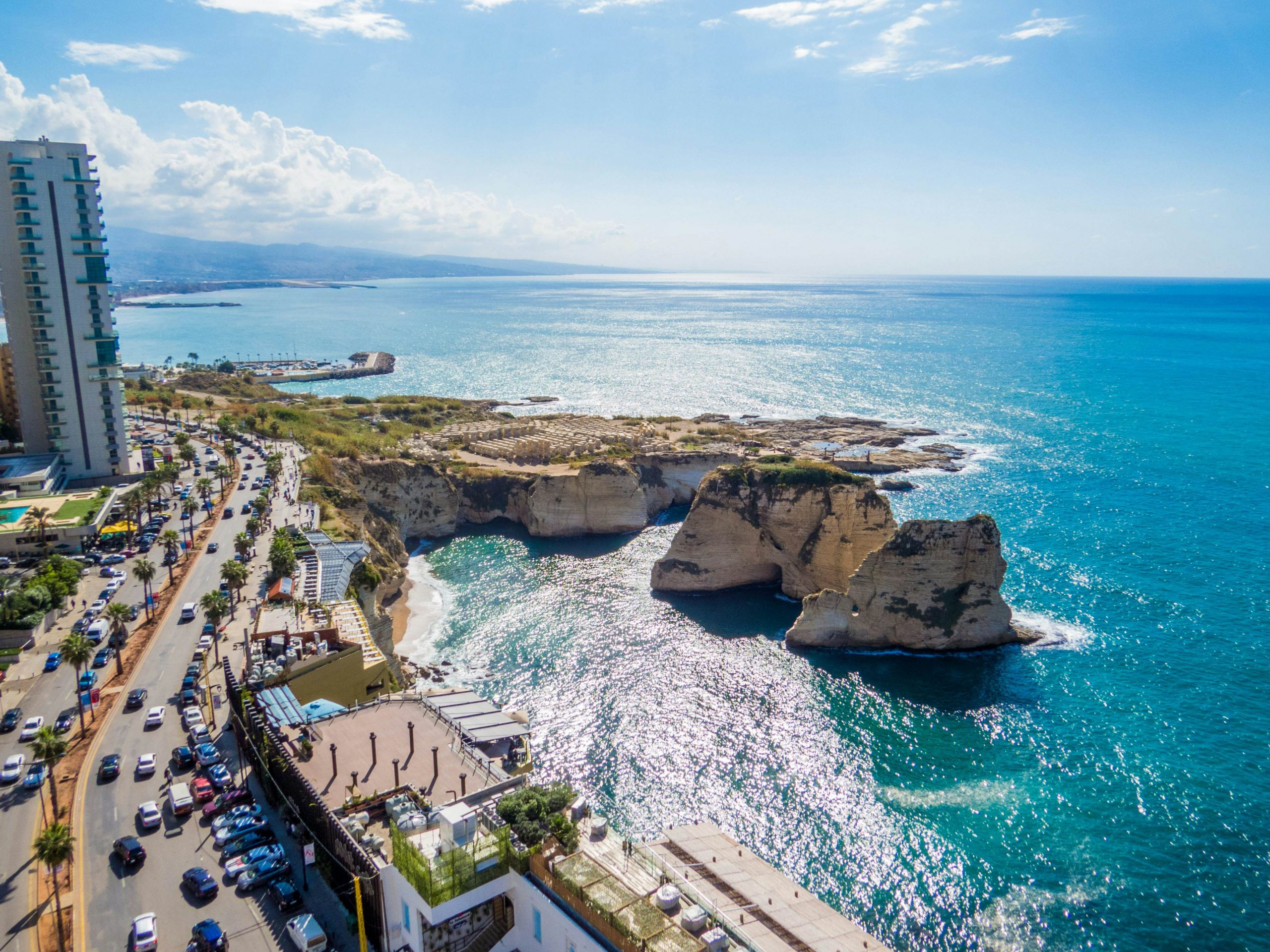Beirut, the capital of Lebanon, is a city with a rich history, a Mediterranean climate, and a mix of modern and traditional elements. Beirut is located on a peninsula in Lebanon’s Mediterranean coast, at the base of the Lebanon Mountains. The city’s triangular shape is due to its position between and on top of two hills, Al-Ashrafieh and Al-Musaytibah. Beirut has a Mediterranean climate with hot summers, mild winters, and warm springs and autumns. Some places to visit are Jeita Grotto, Baalbek, National Museum of Beirut, Sursock Museum and many more to explore.
Top 5 Places to visit in Beirut
1. Jeita Grotto
Jeita Grotto is a system of two interconnected limestone caves in Lebanon that are known for their natural sculptures, stalactites, and stalagmit. Situated in the Nahr al-Kalb river valley, about 11 miles north of Beirut. The upper cave is accessible by walkways, while the lower cave is only accessible by boat. The lower cave contains an underground river that provides drinking water to over a million Lebanese. Hours: Open Tuesday–Thursday from 9 AM–6 PM and Friday–Sunday from 9 AM–7 PM. Some say the tour is a must-see and that the guide provides fascinating insights.
2. National Museum of Beirut
The National Museum of Beirut is a major cultural institution in Lebanon that showcases the country’s history and cultural heritage. It is situated at the edge of Achrafieh in Beirut. Features about 1,300 artifacts from prehistoric times to the medieval Mamluk period. Includes the world-famous Phoenician exhibit, the “Hippodrome” mosaic, and other artifacts such as Phoenician gilded bronze figurines, human-faced Phoenician sarcophagi, and a frescoed Roman tomb. Good for Kids. Recommended tours: Walking and biking tours, private and custom tours, and cultural and theme tours.
3. Baalbek
Baalbek is a large archaeological complex in Lebanon that includes the ruins of an ancient Roman town and is a UNESCO World Heritage site. It is located in the Bekaa Valley region of eastern Lebanon, about 42 miles northeast of Beirut. Baalbek was an important holy site in the ancient world, likely inhabited since around 9,000 BCE. The Phoenicians built temples and shrines to their sky god, Baal, making Baalbek a pilgrimage site. The Romans used the temples to honor their own gods.
4. Hamra Street
Hamra Street is a busy, historic street in Beirut, Lebanon, known for its shops, restaurants, and cultural significance. It is located in the Hamra neighborhood of Beirut. It’s close to the beach and Pigeon Rocks. The street has many shops, including boutiques, fashion galleries, and places for electronics, banks, and offices. Therefore it also has many restaurants and cafes, including traditional Lebanese restaurants, souvenir shops, and places for coffee. It is always busy, especially during rush hour. Some say it’s best to walk and not use a car.
5. The Corniche Beirut
The Corniche Beirut is a seaside promenade in Beirut, Lebanon that stretches along the Mediterranean Sea. Situated in the Central District of Beirut, running from Ras Beirut in the east to the St George Yacht Motor Club in the west. It is home to several monuments and landmarks, including Pigeon Rocks, the Martyrs’ Statue, and the Old Ferris Wheel. Visitors can take a boat around the caves and rocks, or explore the tracks to the lower cliffs. The Manara Palace is located across the road from the lighthouse and offers a restaurant with views of the Mediterranean.

Leave a Reply